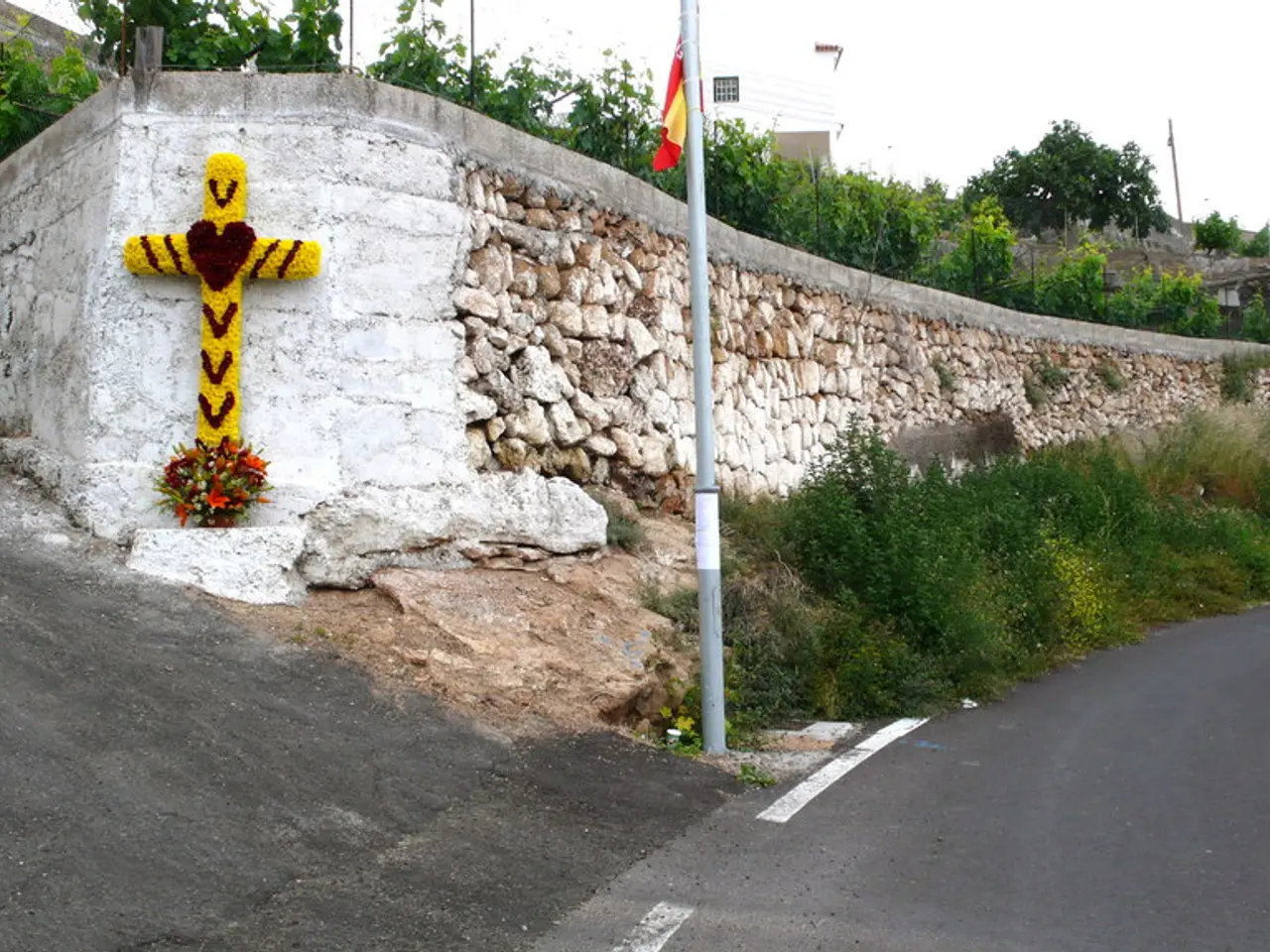Alternative Designs for Your Garden's Walkways: Unveiling Nine Innovative Ideas
## Affordable and Effective Garden Path Materials: A Comprehensive Guide
When it comes to choosing the perfect garden path material, the options are vast, each with its own advantages and disadvantages. In this article, we will explore four popular path materials—gravel, mulch, paving slabs, and garden edging—providing costs, installation tips, and best-use scenarios for various garden styles.
### Gravel
Gravel is an affordable, easy-to-install, and versatile option, suitable for traditional, rustic, and modern minimalist gardens. With costs ranging from $1–$3 per square foot, gravel offers excellent drainage and a natural look. However, it can shift and require occasional top-ups, and may not be ideal for wheeled traffic.
To save on costs, consider buying in bulk from local suppliers. For a cleaner appearance, edge the path with bricks or metal. To suppress weeds, use landscape fabric underneath the gravel.
### Mulch
Mulch, costing $0.50–$2 per square foot, is a budget-friendly choice for informal, cottage, and woodland gardens. It provides a soft underfoot feel, enriches soil, and suppresses weeds. However, it decomposes and needs annual refreshment, and can blow away.
Organic mulch (such as bark or wood chips) is perfect for naturalistic, woodland, or informal gardens, while dyed mulch can offer colourful accents. To define the path, consider using stones or flexible metal edging.
### Paving Slabs
Paving slabs, costing $2–$8 per square foot (basic to premium), are a durable and low-maintenance option, suitable for formal, Mediterranean, and contemporary gardens. They offer a wide style range and can mimic luxury stones at an affordable price. However, they require labor-intensive installation.
Choose affordable porcelain or concrete slabs, lay them on compacted sand, and use spacers for even gaps. Sweep and occasionally pressure wash the slabs, and reseal natural stone if needed.
### Plastic/Metal Edging
Plastic or metal edging, costing $0.50–$2 per linear foot, is an inexpensive and easy-to-install option that defines paths clearly. While less durable than stone or brick, it offers a sleeker look for slightly more. Hammer stakes into the ground, attach the edging, and ensure a level finish.
## In-Depth Tips for Each Material
### Gravel
- Types: Pea gravel (soft, casual), crushed stone (stable, formal), river rock (decorative). - Cost-Saving Tip: Buy in bulk from local suppliers for the best price. - Maintenance: Rake occasionally to redistribute, add fresh gravel as needed. - Style Fit: Ideal for cottage, rustic, or drought-tolerant gardens; pairs well with metal or brick edging for a polished look.
### Mulch
- Types: Organic (bark, wood chips), rubber (play areas), dyed (colorful accents). - Cost-Saving Tip: Use free arborist wood chips if available in your area. - Maintenance: Refresh annually; avoid piling against plant stems to prevent rot. - Style Fit: Perfect for naturalistic, woodland, or informal gardens; use with minimalist metal edging for contrast.
### Paving Slabs
- Types: Concrete, porcelain, natural stone (budget to premium). - Cost-Saving Tip: Opt for concrete or porcelain slabs that mimic pricier materials. - Maintenance: Sweep and occasionally pressure wash; reseal natural stone if needed. - Style Fit: Suits formal, Mediterranean, or modern gardens; experiment with patterns for visual interest.
### Plastic or Metal Edging
- Types: Flexible plastic, rigid metal, corrugated steel. - Cost-Saving Tip: Plastic is the cheapest; metal offers a sleeker look for slightly more. - Maintenance: Check for shifting or damage after heavy rains or frost. - Style Fit: Modern and minimalist gardens; use to define any path material.
## Additional Tips for All Paths
- **Weed Control:** Lay landscape fabric (like HOOPLE Garden Weed Barrier) under gravel or mulch to suppress weeds for several years. - **Drainage:** Ensure proper grading so water flows away from paths and plant beds. - **Edge Definition:** Clearly defined edges (with edging material or a shallow trench) keep materials in place and reduce maintenance. - **DIY Friendly:** Gravel, mulch, and plastic edging are especially easy for DIYers, while paving slabs may require more skill or professional help.
## Choosing for Your Garden Style
- **Cottage/Rustic:** Gravel or mulch paths with brick or stone edging. - **Modern/Minimalist:** Sleek gravel with metal edging, or large-format concrete slabs. - **Formal/Traditional:** Paving slabs in classic patterns, edged with brick or stone. - **Woodland/Naturalistic:** Mulch paths, subtly edged with logs or stones.
## Summary
Gravel and mulch are the most affordable and easy-to-install options, ideal for casual or natural gardens, while paving slabs offer durability and elegance for formal spaces at a higher cost. Plastic and metal edging provide budget-friendly definition. All materials benefit from proper edging and weed barrier use. Your choice should balance cost, maintenance, and the visual style you desire for your garden.
In the realm of home-and-garden improvements, considering the lifestyle you wish to create is essential. For a minimalist or modern home, incorporating sleek gravel with metal edging into your garden path design might be an attractive choice, offering a stylish yet practical touch to your home-and-garden lifestyle. Additionally, if you are seeking a more naturalistic or budget-conscious approach, exploring mulch in your woodland or cottage garden could be a perfect fit, providing both cost savings and an organic look that complements your garden's surrounding flora.




